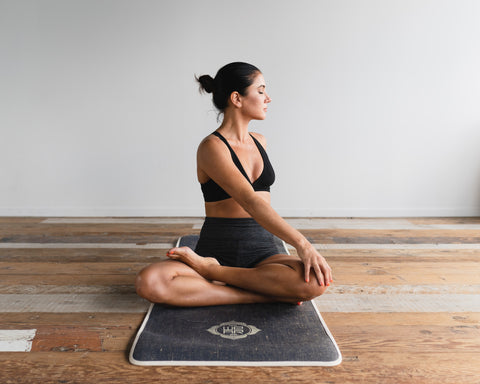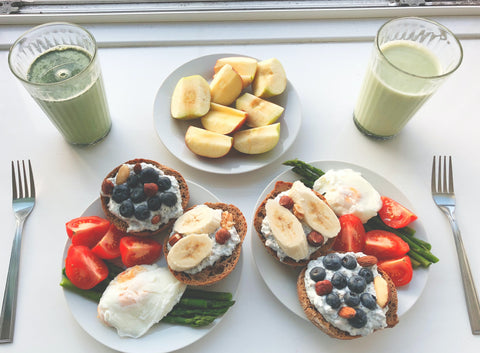While some people are naturally more flexible than others, learning how to increase flexibility will do your body a world of good.
That’s because when you boost flexibility, you may also prevent injuries, reduce neck and back pain, ease achy muscles and joint stiffness, and even improve your posture.
All these benefits help you look and feel your best.
So how do you increase flexibility fast?
We’ll share our favorite tips in this short guide.

How to Increase Your Flexibility
Being flexible is more than being able to touch your toes. It means your body can easily bend in all directions without hurting or causing injury.
By following and implementing these four strategies, you’ll be well on your way to becoming more flexible each day:

1. Create a Daily Stretch Routine
The absolute best way to increase flexibility fast is to get started with some light daily stretches.
Whether you work out every day or sit at a desk for 10 hours, having a daily stretch routine allows you to extend your muscles, release tension, and soften soreness or stiffness in your joints.
If you don’t make time to stretch these muscles out, they’ll compress more each day, which gives you that “tight” feeling and may even cause pain.
Make it a point to stretch every day, and you’ll prime your body to become used to bending and releasing this muscle tension. This will naturally boost your flexibility and your range of motion over time.
Start from the top with some neck rolls, work your way down to your shoulders and hips, then finish with your quads and hamstrings. Aim for 10 to 15 minutes of stretching each day.
Similar to making strength gains at the gym or improving at your favorite hobby, practice makes perfect.
Each time you complete a stretch session, you’ll be able to bend deeper, easier and faster, than the day before. This may not feel good the first time, but it will feel great each time after that as you gradually increase your flexibility.
Here’s the best news: You don’t need fancy, expensive equipment or a gym membership to stretch. You can use the floor, a wall, a doorway, or even your bed when you wake up first thing in the morning.
Get in the habit of stretching in the AM to wake up your muscles after sleeping. Or stretch right before bed to relax the muscles you worked hard during the day. Either way is beneficial (and doing both is even better!) for your overall flexibility.

2. Always Stretch Before and After Your Workouts
Resist the urge to jump right into your HIIT circuit or daily walk, and always include a stretch routine both before and after your workouts.
Choose dynamic stretches prior to working out, such as torso twists, squats, lunges, leg swings, and other warm-up staples.
These controlled, active movements can energize and prime your muscles and open up your range of motion. This allows you to go deeper with each rep during your workouts. They can also help prevent injury.
Go with static stretches after your workout to ensure your muscles recover properly, on top of increasing your flexibility.
With these, you’ll stand or sit in one position and hold that pose for 20 to 45 seconds. An overhead triceps stretch, seated butterfly stretch, and head-to-knee bends are considered passive stretches because your muscles are relaxed, making them best for your post-workout cooldown.
Don’t forget to breathe! You should breathe into each move instead of holding your breath during your stretching. This will send oxygen right to where your body needs it most, which will help you get through the stretch better and increase flexibility.

3. Weave in Some Yoga Sessions Throughout Your Week
Yoga is another fantastic option to add to your health toolkit. It not only boosts your flexibility, but also helps you recover better from your workouts.
One study found that college athletes improved their flexibility and balance when they followed a 10-week yoga program.
To reap these benefits at home, you can search YouTube for free videos on “yoga for flexibility” and add a session or two into your weekly routine. You can also try incorporating a few moves during your pre- and post-workout stretches.

4. Consider Investing in Tools That Can Help Increase Flexibility
Using a foam roller can work out and massage tight areas in your body. This will help you break up knots in your muscles, making way for extra blood and oxygen to flow. This feels incredible and helps your flexibility.
Yoga straps also have the power to deepen your stretches, which is another key ingredient for increasing flexibility.
Both tools are super affordable and easy to buy online.

Final Thoughts on How to Increase Flexibility
After reading this short guide, you can see there are a number of great benefits that come from increasing your flexibility, which is why you should try out some of these tips today.
You’ll notice it doesn’t take much to increase flexibility fast. And you’ll start feeling better even sooner than that.
Author: Devan Ciccarelli
Email: devan@behappynothangry.com
Instagram/Facebook Group: @behappynothangry/Be Happy Not Hangry
Website: www.behappynothangry.com




